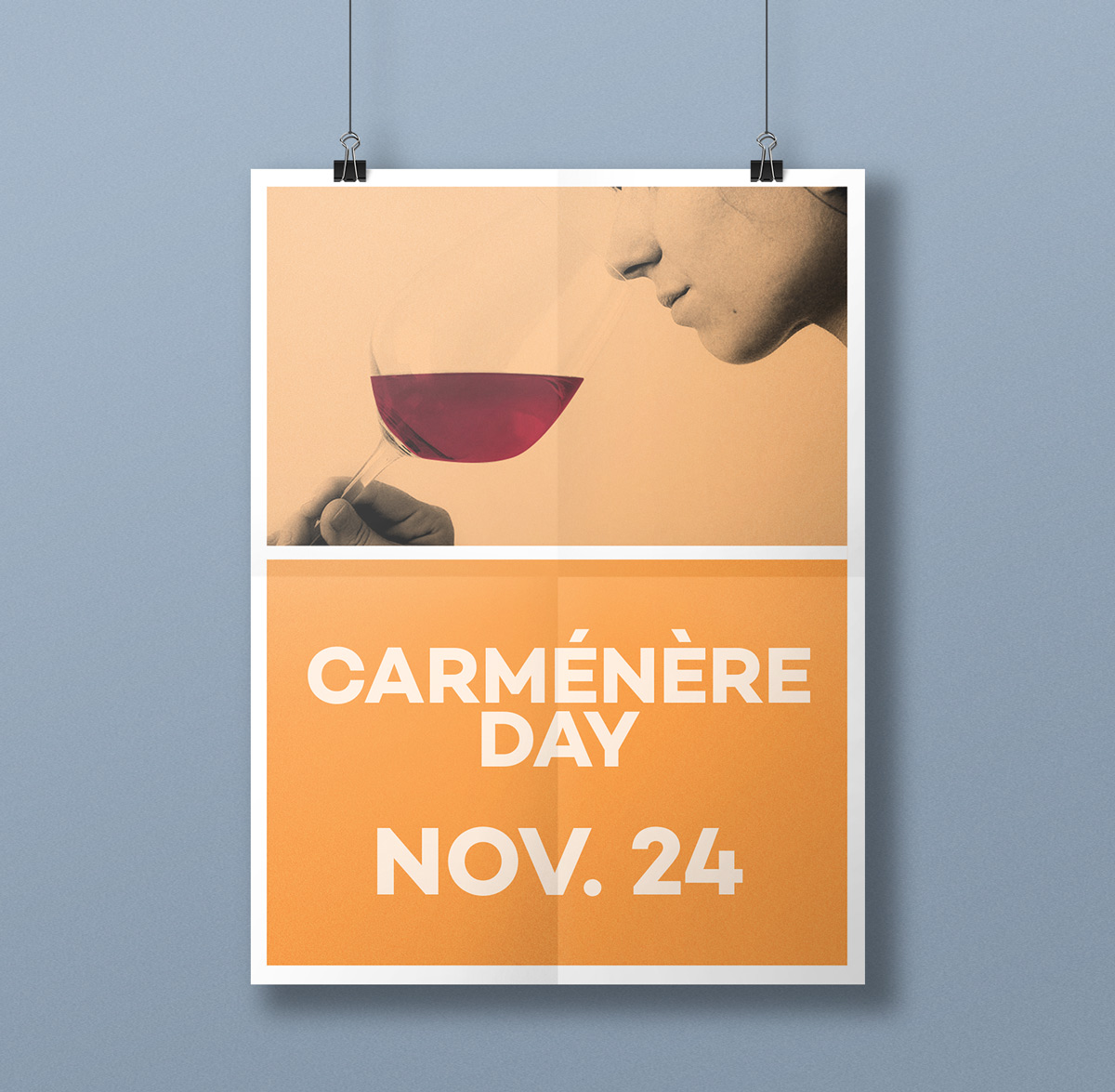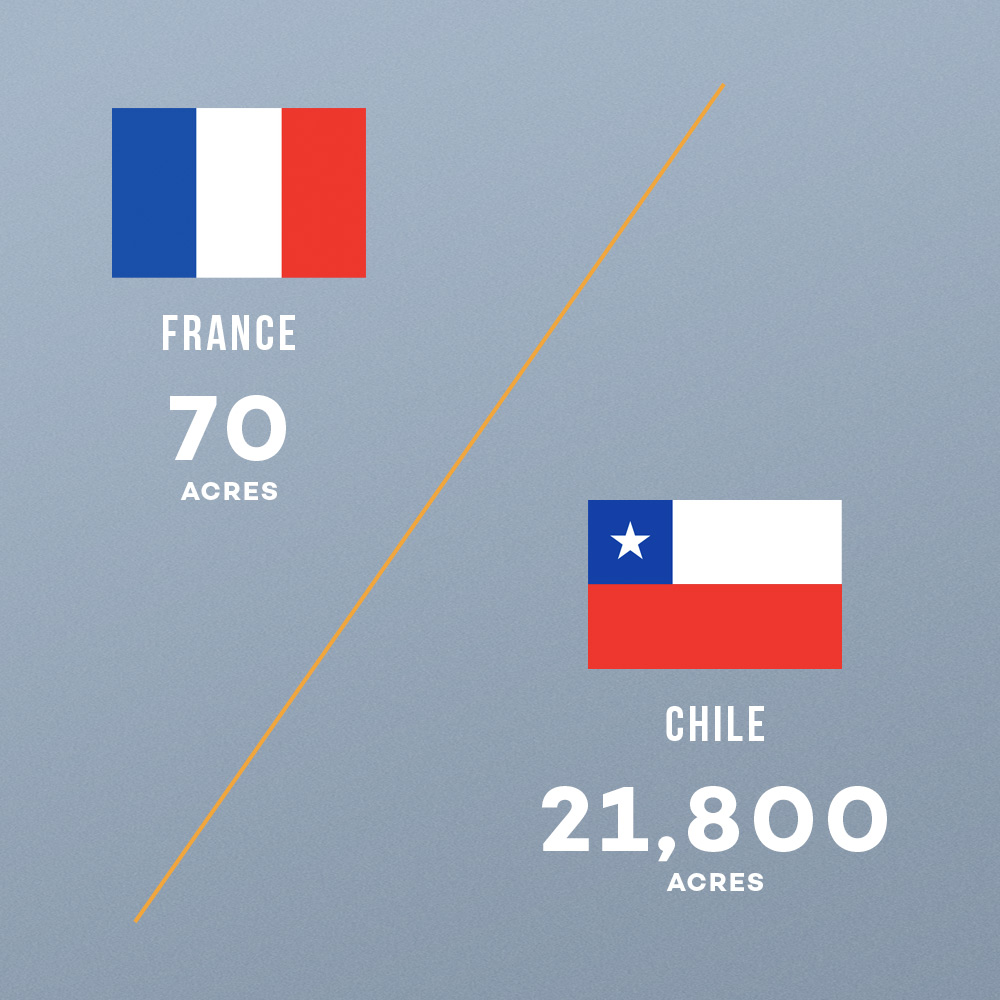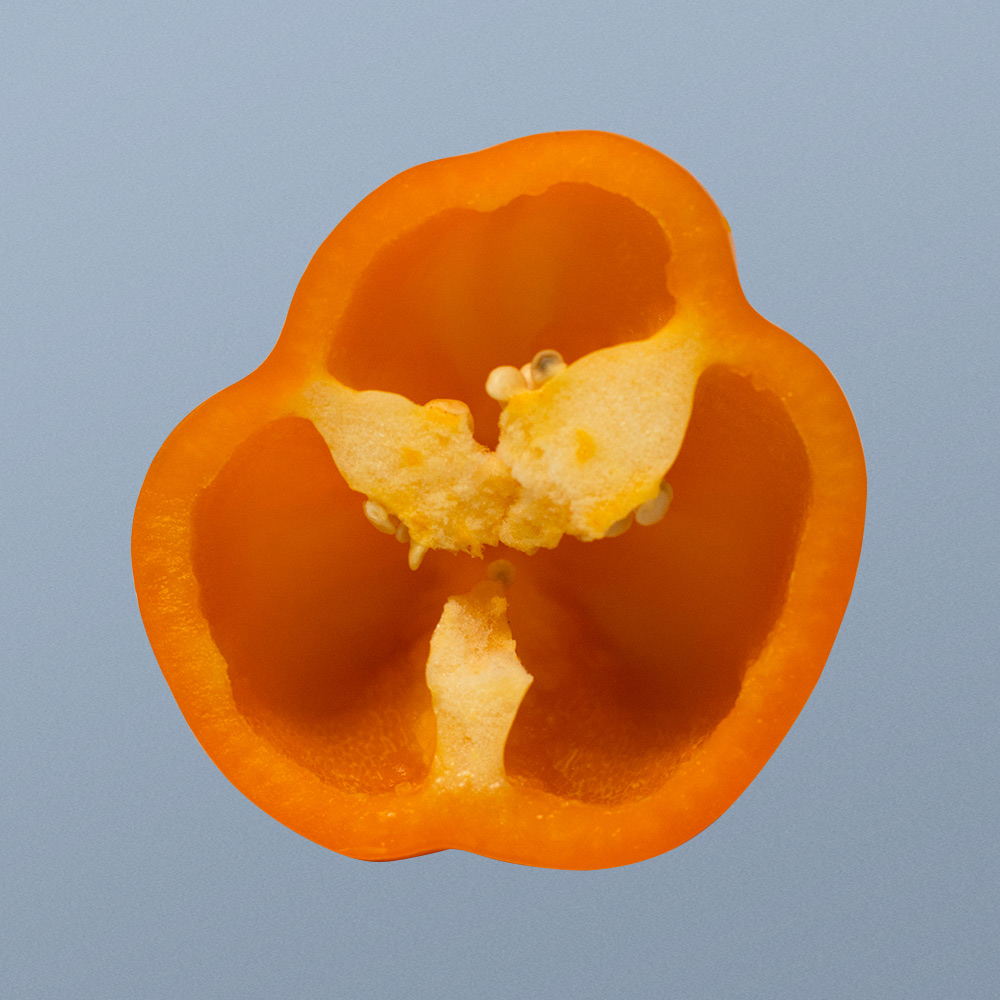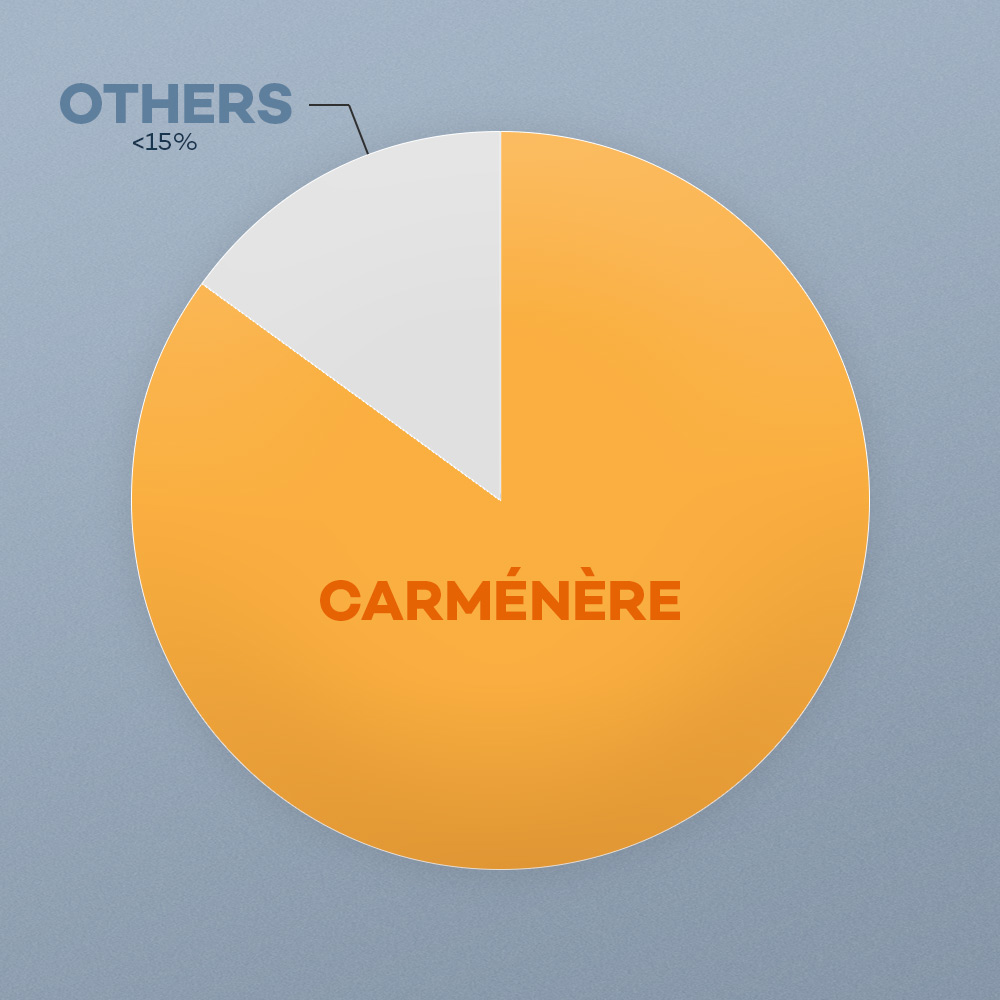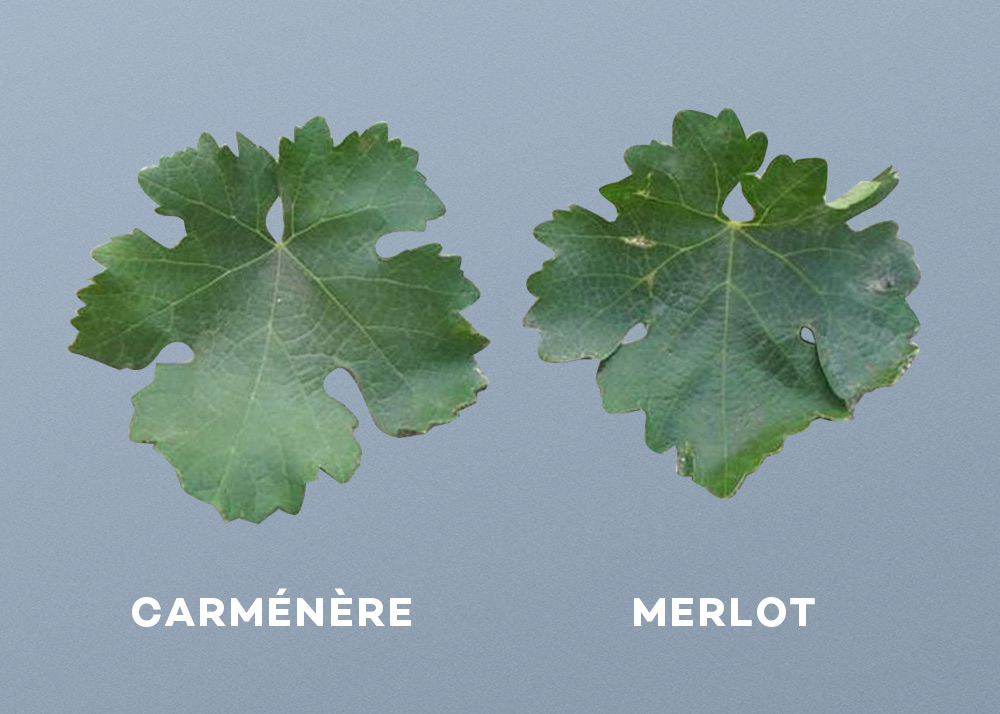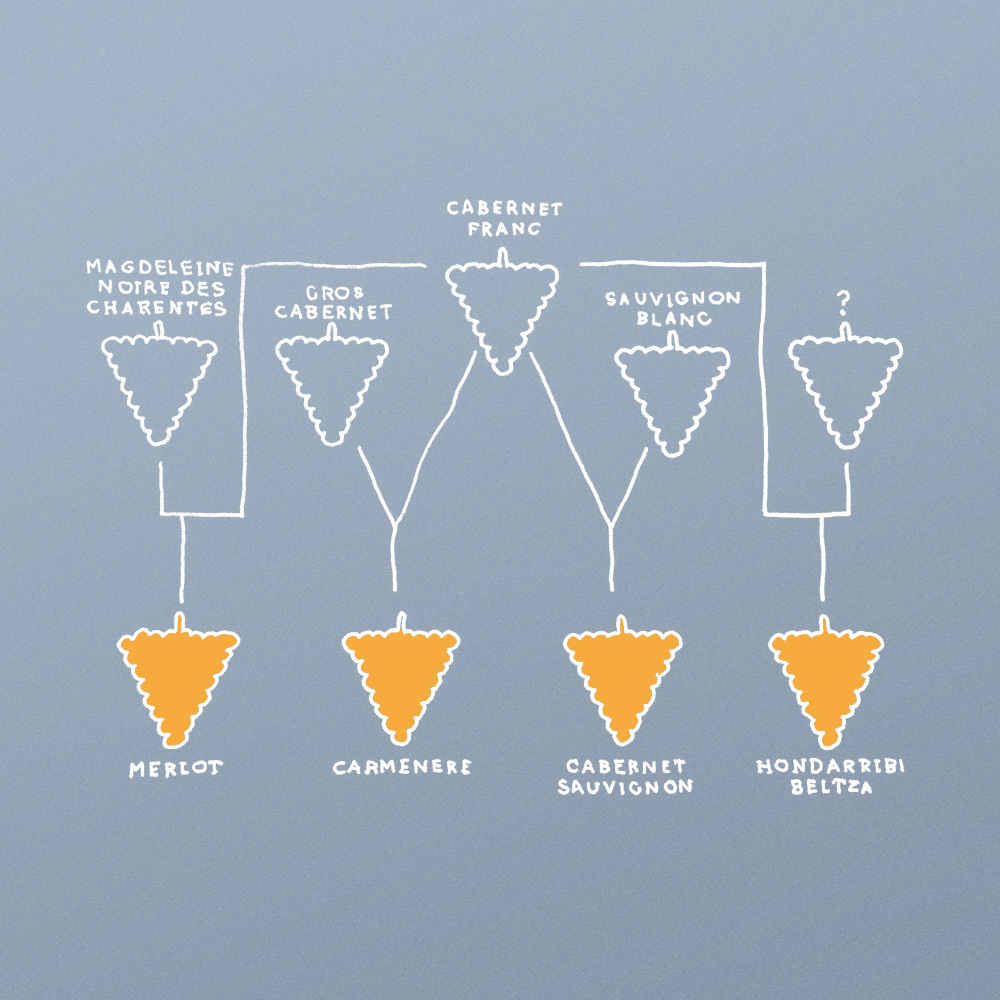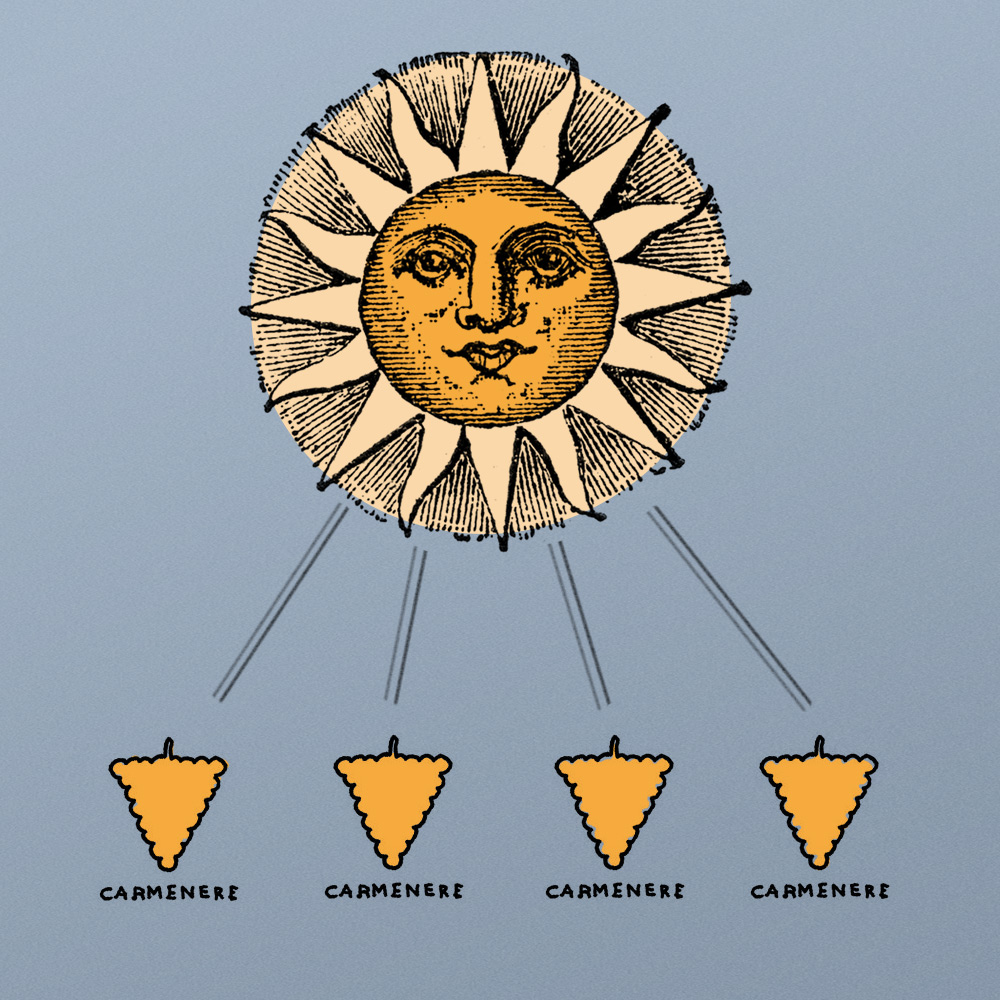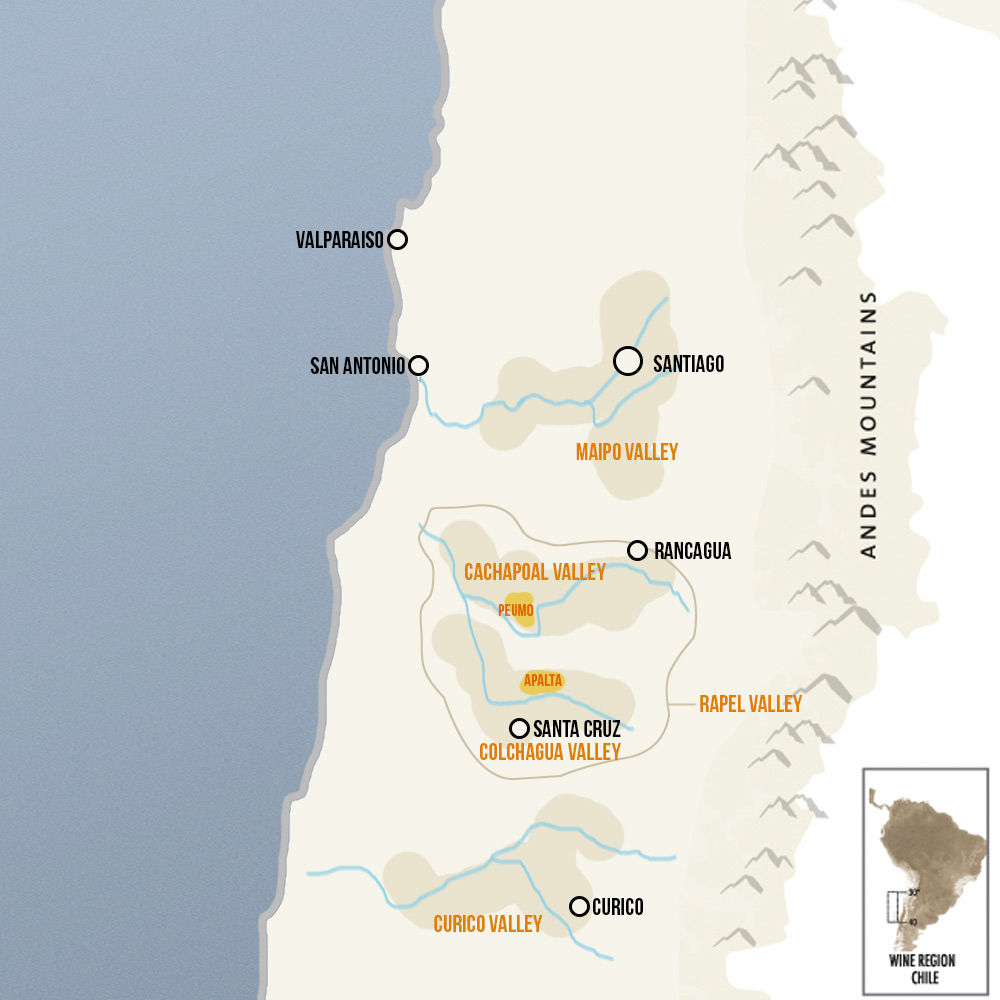Here are ten facts about Carménère wine that will help you get the most out of each sip.
1. Calendar alert: November 24th is Carménère Day!
In 2024, Carménère will celebrate 30 years since it was rediscovered in Chile and recognized as a unique variety. Although the grape existed much earlier, it was mistaken for Merlot until 1994 (see #6 below).
Viña Carmen became the first winery in Chile to release a Carménère wine in 1996, initially labeling it as Grande Vidure, as the Carménère variety was not officially registered with the Ministry of Agriculture or approved by law until 1998.
Viña Carmen became a driving force in the development of Carménère in Chile and began marketing the product as the “lost variety of Bordeaux that no one else had.”
See the wine day calendar for more annual wine holidays.
2. Carménère is nearly extinct in its homeland but is Chile’s 5th most important grape.
Carménère originates from the Bordeaux region of France. Before the 1870s, Carménère was a prevalent blending grape in Bordeaux, found mostly in Graves and the Pessac-Léognan appellations. However, due to the phylloxera infestation, nearly all the Carménère vines – along with most of the vineyards in Bordeaux – were wiped out. When vignerons in Bordeaux began replanting, however, they opted to plant the easier-to-grow Cabernet Sauvignon and Merlot instead, and Carménère was thought to be on the verge of extinction.
3. Carménère wine has red fruit flavors and an unmistakable pepper note.
Carménère contains higher levels of aroma compounds called pyrazines, which give wines like Carménère, Cabernet Franc, and Cabernet Sauvignon subtle bell pepper, green peppercorn, and eucalyptus flavors. Find out more about this impact aroma compound and what other wines have it in their taste profiles.
4. Wines labeled Carménère can contain up to 15% other grape varieties.
In Chile, a single-varietal wine can have up to 15% other grape varieties blended in with it. With Carménère, winemakers note that a small amount of Syrah or Petit Verdot makes the wine more lush!
- 100% Carménère wines generally have more red fruit flavors of raspberry and pomegranate along with the clascic notes of green pepper and paprika.
- If a Carménère wine has blackberry, black plum, and blueberry notes, it usually means it includes a small amount of other grapes.
5. Carménère wine pairs exceptionally well with roast pork and lamb with mint.
The lighter tannin and higher acidity in Carménère wine make it quite an easy red to pair with a wide variety of dishes. Ideally, leaner grilled meats with savory sauces like Chimichurri, green salsas, mint, or parsley pesto will complement the herbal qualities of the wine and make it taste more fruity. Carménère will even do well alongside darker white meats, including turkey and duck.
6. Carménère was first brought to Chile in the mid 1800s and was mistaken for Merlot until 1994.
When Carménère was first transplanted from Bordeaux into Chile, it was thought to be Merlot and, therefore, was often alongside Merlot vines, ultimately blending together. Then, in 1994, the French ampelographer (grape botany expert) Jean-Michel Boursiquot noticed how some of the “Merlot” vines took much longer to ripen. Boursiquot’s research determined that somewhere close to 50% of Merlot in Chile was actually the long-lost Carménère variety of Bordeaux. Finally, in 1998, Chile officially recognized Carménère as a distinct variety.
7. Carménère is a half-sibling.
Merlot, Carménère, Cabernet Sauvignon, and Hondarrabi Beltza (from Basque Country) all have the same parent: Cabernet Franc. Carménère is particularly unique because Cabernet Franc is its parent and its great-great-grandparent — perhaps this helps explain why Carménère and Cabernet Franc taste so similar!
8. Carménère is a very slow-ripening grape, best suited for long and dry summers.
Carménère ripens about 4–5 weeks after Merlot, meaning it needs ample hang-time (and good weather) to properly mature. When it does, it produces small bunches of deep blue-black grapes. In the fall, the leaves turn brilliant shades of red and orange.
The overall production of a Carménère vine is naturally quite low, which some consider a positive for concentrated, high-quality grapes. Overall, the grape is said to be moderately difficult to grow well. However, it shows more promise in sandy soils (producing elegant, aromatic wines) and clay-based soils (making richer, more structured wines).
9. Top-rated Carménère wine ages well and typically cost between $50–$100.
Fine Carménère wines offer dense, ripe, and powerful flavors of plums, berries, and cocoa notes, along with a creamy mid-palate and fine-grained tannins. The best-rated wines typically have higher alcohol ranges between 14.5–15% ABV and easily resemble fine Bordeaux or Cabernet Sauvignon (with softer, more gentle tannins).
Here are the Carménère wines (from some of Chile’s largest producers) that consistently top the Wine Spectator, Wine Enthusiast, and Wine Advocate charts:
- “Herencia” by Santa Carolina: A 100% Carménère wine from Peumo in Cachapoal Valley.
- “Alka” by Francois Lurton: A 100% Carménère wine located in Lolol in Colchagua Valley.
- “Carmín de Peumo” by Concha y Toro: About 85% Carménère blended with Cabernet Sauvignon and Cabernet Franc from Peumo in Cachapoal Valley.
- “Kai” by Vina Errazuriz: 95% Carmenère and 5% Syrah from the Aconcagua Valley.
- “Purple Angel” by Montes: 92% Carménère and 8% Petit Verdot from Marchigüe and Apalta areas in Colchagua Valley.
Remember that many producers don’t submit their wines for ratings, so there are more gems to find if you dig!
10. The boldest Carménère wine comes from Cachapoal and Colchagua Valley.
Carménère produces the boldest styles from the Cachapoal and Colchagua Valleys. The two most famous sub-zones within these valleys are Apalta and Peumo in Colchagua and Cachapoal, respectively. Wines made with a blend of grapes from both valleys usually have Rapel Valley on the label.

Map of Chile’s Wine Regions
Spanish Conquistadors first brought wine into Chile in the mid-1500s. Make sense of the wines and regions of Chile with our most up-to-date map, included in the Wine Folly Wine Map Set – 2nd Edition.

